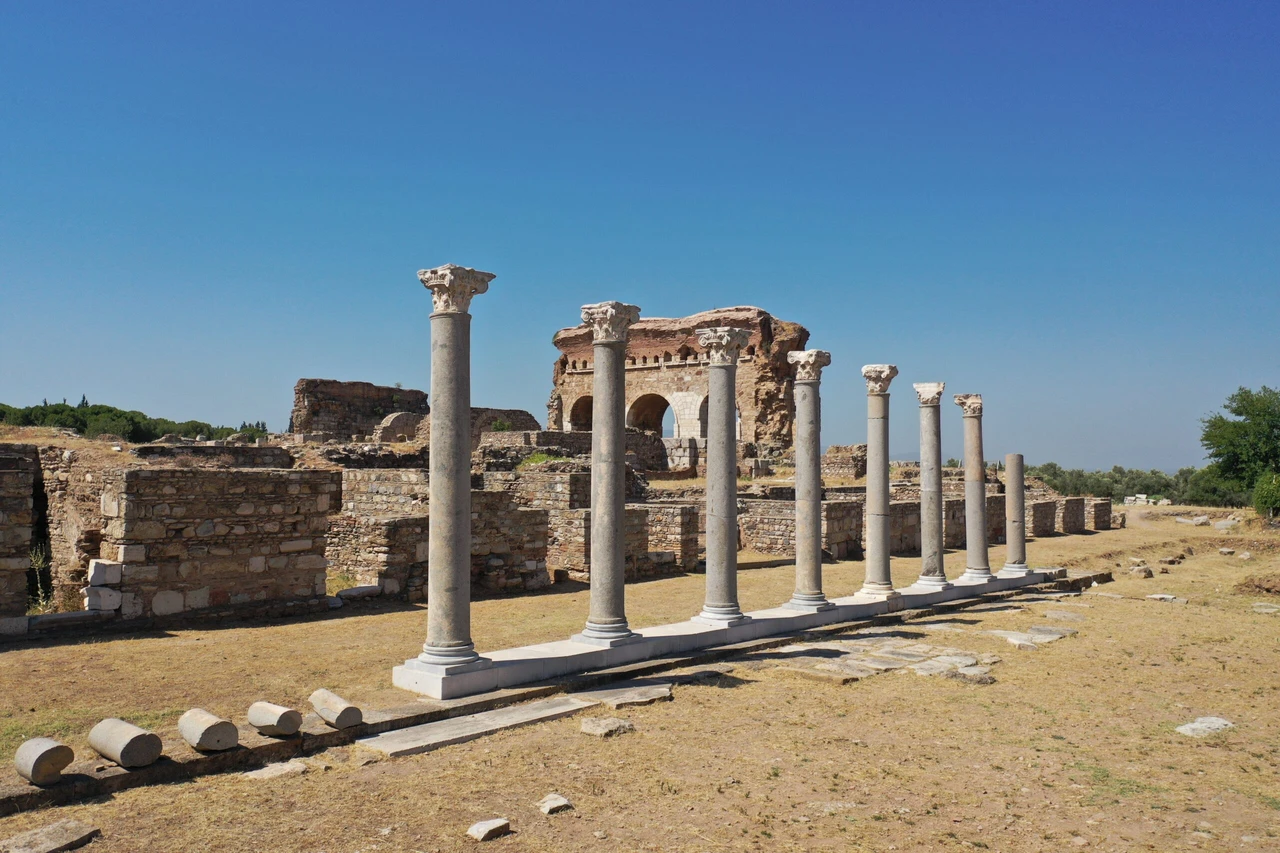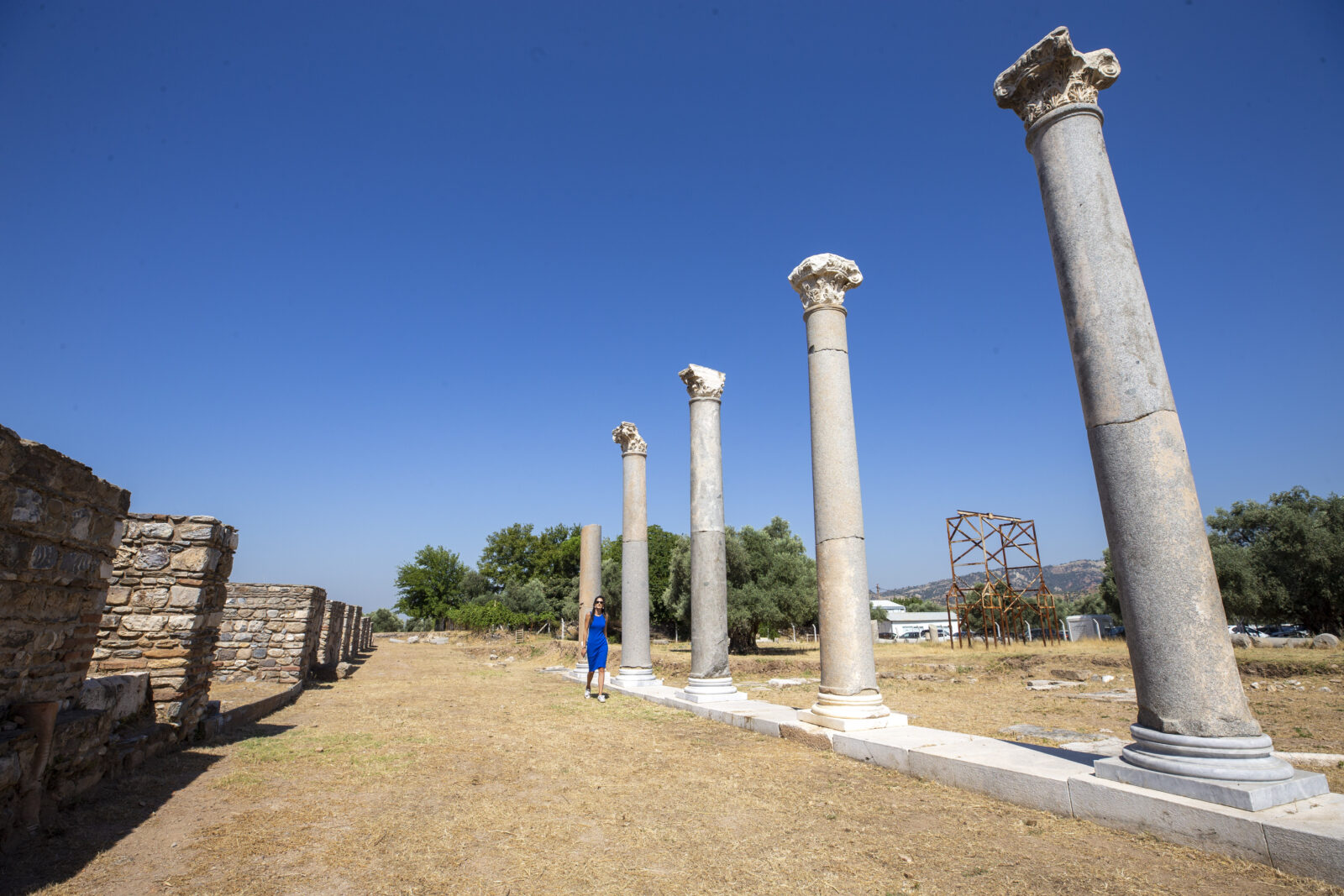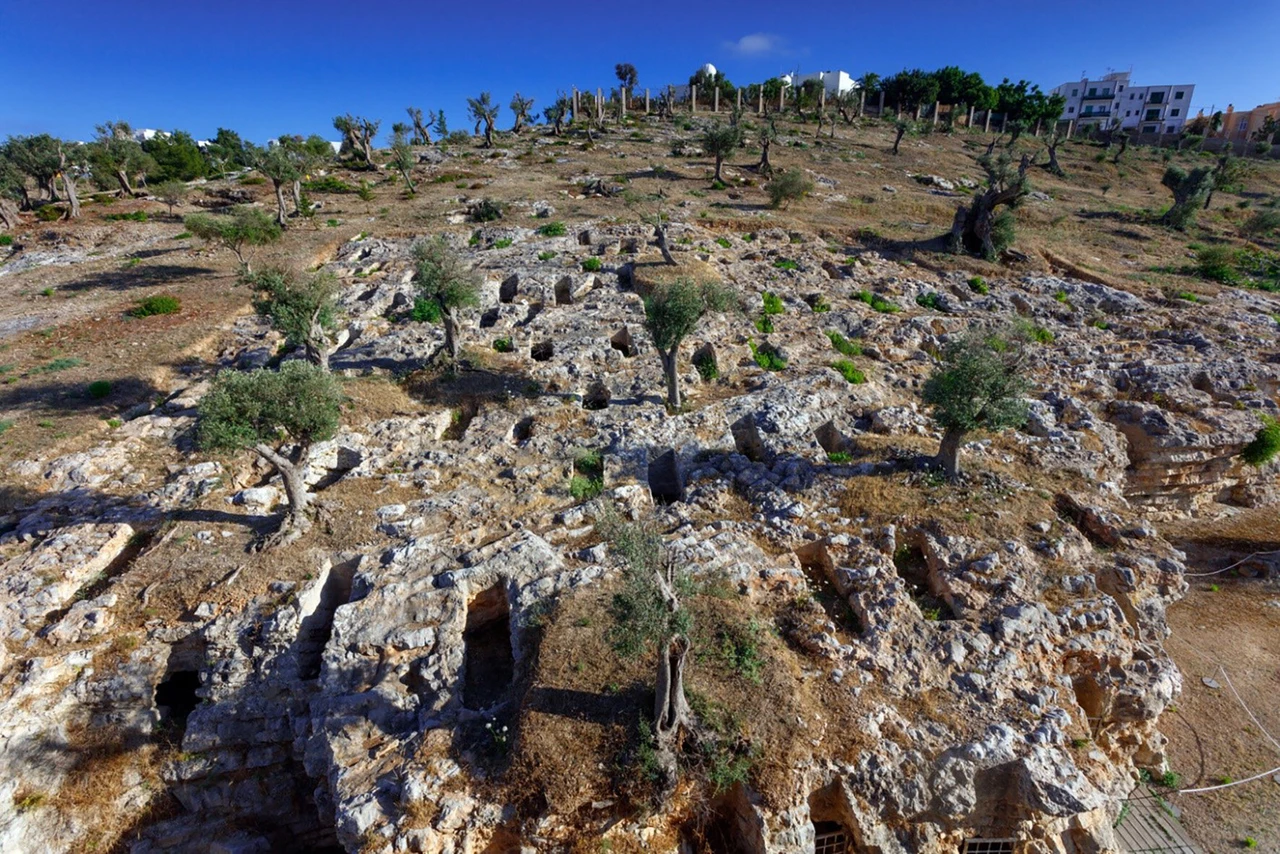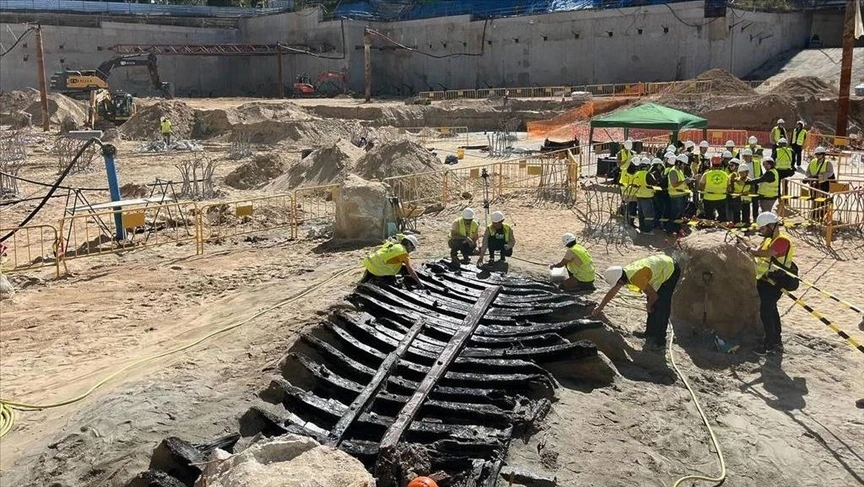Türkiye’s Tralleis’ ‘Independence Avenue’ revealed
 Excavations in the ancient city of Tralleis, known for its identity as a city of production and trade in ancient times, unearth the city's largest street, in Aydin, Türkiye, July 24, 2024 (AA Photo)
Excavations in the ancient city of Tralleis, known for its identity as a city of production and trade in ancient times, unearth the city's largest street, in Aydin, Türkiye, July 24, 2024 (AA Photo)
In the ancient city of Tralleis, known for its production and trade significance, excavation efforts have intensified on the city’s largest and most vibrant street, the colonnaded avenue.
Led by professor Murat Cekilmez from Aydin Adnan Menderes University, these meticulous excavations aim to uncover the full extent of this historical thoroughfare.

Ancient street compared to Istanbul’s Istiklal Avenue
Cekilmez likens this avenue to modern Istanbul’s Istiklal Avenue or Aydin’s boulevards, describing it as one of the city’s most dynamic and active areas.
Tralleis, with its impressive grid plan, was one of the largest cities in the Roman Empire, housing between 35,000 to 40,000 people.
Cekilmez emphasized the city’s development in trade and production, highlighting its economic prosperity and the significance of its ceramic trade.

Length and future prospects of avenue
Current excavations have uncovered a 100-meter stretch of the colonnaded avenue, with plans to reveal an additional 200 meters in the coming years.
The total length of the avenue is estimated to be about 1 kilometer, stretching from the Kemer district to the military area, oriented east-west.

Economic, cultural significance of Tralleis
Cekilmez underscores Tralleis’s historical importance and wealth, linking it to the ceramic trade mentioned by ancient writers.
He asserts that Tralleis was a major economic and cultural hub during the Roman Empire, reflecting its prosperity and influence through its extensive trade network and architectural grandeur.



